The Seagate 600 & 600 Pro SSD Review
by Anand Lal Shimpi on May 7, 2013 8:00 AM ESTThe Seagate 600/600 Pro
Both the Seagate 600 and 600 Pro are 2.5” SATA drives. Their enclosures are completely screw-less, which makes getting in a bit of a pain but it’s not impossible. The 600 is available in 7mm and 5mm thicknesses, the latter is something we’ve only recently seen with Western Digital’s UltraSlim drive announcement. The 600 Pro is only available in a 7mm form factor.
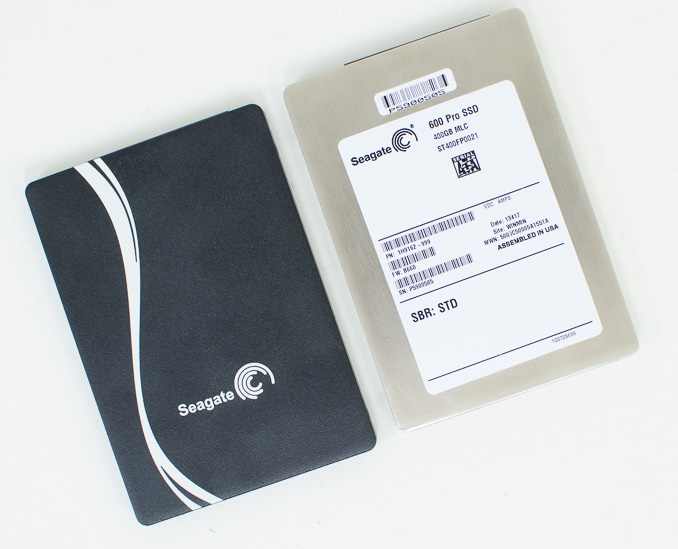
Seagate 600 (left) vs. Seagate 600 Pro (right)
All 600/600 Pro designs that I’ve seen thus far use single-sided PCBs and 8 NAND devices. Seagate simply varies the number of NAND die per package to hit various capacity points.
Seagate 600
The Seagate 600 is available in 120GB, 240GB and 480GB capacities using 128GB, 256GB and 512GB of NAND, respectively. All of those drives have 8 NAND devices, and 2, 4 and 8 19nm NAND die per package, respectively.
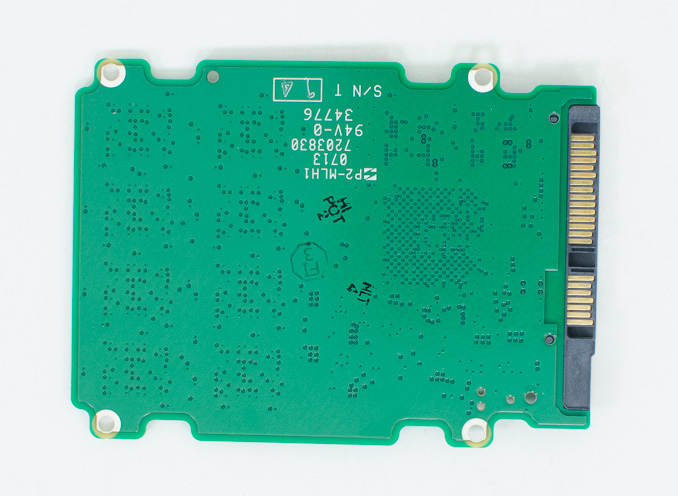
480GB Seagate 600 (back)
The 600 Pro is available in the same capacities, but adds 100GB, 200GB and 400GB versions as well. The 200/400GB 600 Pros have 128/256/512GB of NAND, but are over provisioned to give the controller more spare area to work with. I like the idea of setting aside more spare area for the Pro drive, but the fact that not all 600 Pros are configured this way is bound to be confusing to customers.
Seagate 600 Pro
Other than the availability of heavily over provisioned drives, the 600 Pro also separates itself from the client-focused Seagate 600 by including an array of capacitors for power loss protection. In the event of unexpected power loss Seagate expects the 600 Pro will be able to commit all data received by the LM8780 controller to NAND.
The 600 carries a 3 year warranty and is rated for up to 40GB of writes per day throughout that warranty period (the 120GB model is rated for 20GB of writes per day). The 600 Pro uses better binned NAND and boasts higher endurance over the course of its longer 5 year warranty. As is typically the case with SSDs, endurance tends not to be an issue for client usage - in the enterprise whether or not you can get by with the 600 or need the 600 Pro really depends on your workload.
Seagate isn’t announcing pricing other than to say that the 600/600 Pro will be priced inline with competing drives.


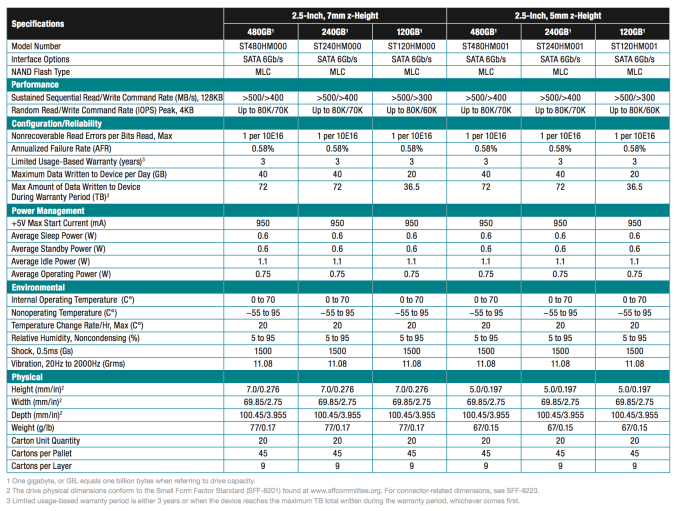

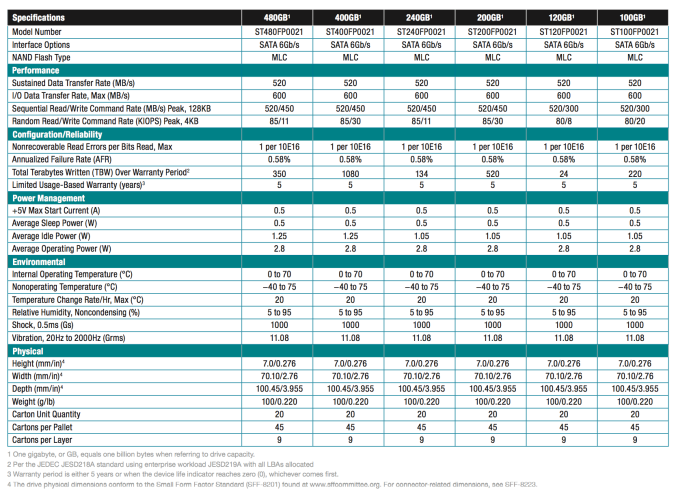
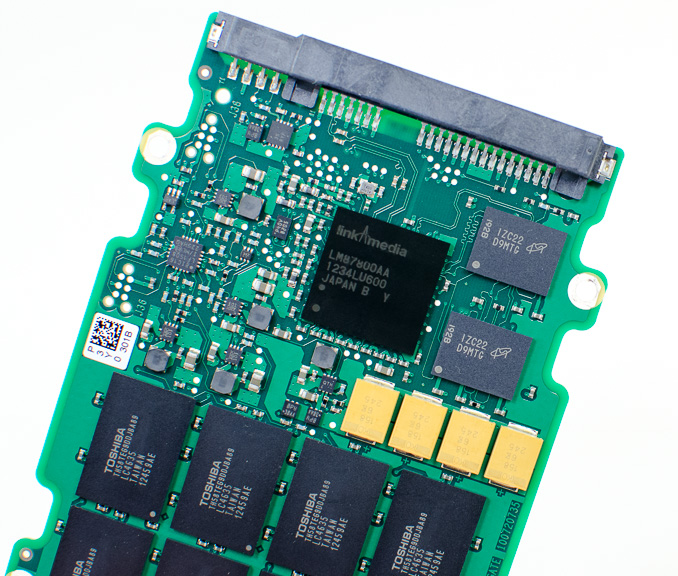














59 Comments
View All Comments
Kristian Vättö - Tuesday, May 7, 2013 - link
The units we have are all based on the older 24nm NAND. A while back I asked Corsair for review samples of the 128/256GB Neutrons (the original ones are 120/240) but they said they are not sampling them (yet). I can ask if they have changed their mind, although there shouldn't be much difference since 19nm Toshiba NAND has the same page/block/die size as 24nm.FunBunny2 - Tuesday, May 7, 2013 - link
Does "Toshiba" mean toggle-mode NAND, by definition? Or do they sell all types?Kristian Vättö - Wednesday, May 8, 2013 - link
Yes, Toshiba uses Toggle-Mode interface for their NAND. Here's the breakdown of NAND interfaces and manufacturers:Toggle-Mode: Toshiba/SanDisk (joint-venture) & Samsung
ONFI: Intel/Micron (aka IMFT, also a joint-venture) & Hynix
LtGoonRush - Tuesday, May 7, 2013 - link
HardOCP showed pretty significant performance increases, though that could also be due to the new firmware (which is not being back-ported as I understand).romrunning - Tuesday, May 7, 2013 - link
I really wish we had more tests of SSDs in RAID-5 arrays. This is really useful for SMBs who may not want/afford a SAN. I'm very curious to see if the 20% spare area affects SSDs just as much when they're RAIDed together as it does standalone. I also don't care of the SSDs are branded as being "enterprise" drives. It would be nice to see how a 5x256GB Samsung 840 Pro RAID-5 array would peform, or even a 5x400GB Seagate 600 Pro RAID-5 array.FunBunny2 - Tuesday, May 7, 2013 - link
No legitimate RDBMS vendor would allow its database on a RAID-5 machine. Never. Never. Never.romrunning - Wednesday, May 8, 2013 - link
I can't tell if you're just trolling or you're actually serious. Obviously, SMBs use RAID-5 arrays ALL the time, and they use "legitimate" database products like MS-SQL, etc. It doesn't have to be an IBM AIX server running DB2, or anything high-end.daniel_mayes - Wednesday, May 8, 2013 - link
What is FunBunny2 talking about? What Raid would you want to run them on 1,5,6,10, no ssd's?You aren't the only one that want's to see more tests with SSD's in a Raid 5. I would also like to see the destroyer run on ssd's with a higher provision and please add Intel DC S3700 to the destroyer benchmark next.
FunBunny2 - Wednesday, May 8, 2013 - link
"I always have found that based on those requirements RAID 5 requires more spindles to satisfy those requirements than RAID 10 - and this has been found even with a Read/Write of 9:1. "here: http://sqlblog.com/blogs/linchi_shea/archive/2007/...
(no, that's not me)
Fact is, SSD still writes slower than reads, so what kind of RAID one uses matters. Having a 3NF (or higher) schema is a more productive avenue for performance on SSD, anyways, irregardless. Getting rid of all that bloated [un|de]normalized byte pile will allow, in most cases, you to have a much smaller database, and thus not worry about bunches and bunches of discs.
romrunning - Friday, May 10, 2013 - link
That blog is from 2007, and SSDs weren't really in the picture at all. It has been demonstrated how SSDs can trump spinning disks in virtually all I/O-bound operations. The man in the blog even showed a test of RAID-5 beating RAID-10 on the same hardware, so his test was in direct contradiction to the one who later commented about spindles.That being said, I think you're trying to say that getting rid of unnecessary in your database will result in a smaller database & thus lower performance requirements. That might be true at one point, but when you've normalized your data already, then additional data will just make the database grow. After all, if you're writing something like electronic orders to your normalized database, it will grow based upon real data addition. That's why you need to make sure your storage array can handle the increased load.
RAID-5 has been the best for SMBs because it provide the fault-tolerance and the higher utilization of total storage capacity that they want. That's why I would like to see tests of SSDs in RAID-5 arrays - to get Anandtech to test these great SSD performers in something I could use in a database server. Something like their tests of their own website databases would be nice, or even smaller ones using a 10-20GB database.